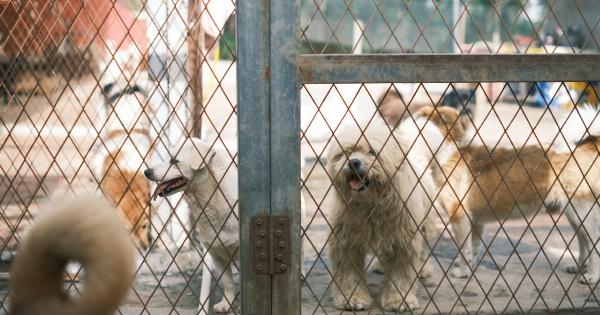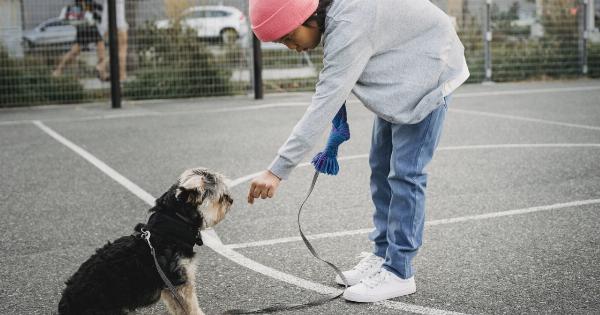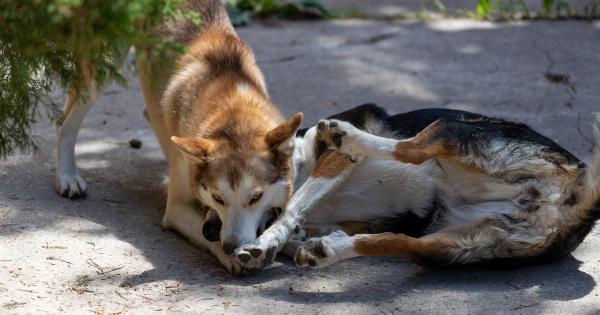When it comes to encountering strange dogs, teaching children to stay away is a crucial lesson. While dogs can be loving and loyal companions, it’s important to remember that not all dogs are friendly or well-trained.
As a responsible adult, it is your duty to educate children about the potential dangers of approaching unfamiliar dogs and help them develop safe habits. In this article, we will discuss ten essential tips for teaching children to stay away from strange dogs.
1. Educate about Dog Body Language
Teaching children to recognize and understand dog body language is paramount. Explain that a wagging tail doesn’t necessarily indicate friendliness, and that bared teeth or raised hair are signs of aggression.
Encourage them to observe and interpret a dog’s behavior before deciding to approach or interact.
2. Instill the Importance of Personal Space
Show children how to respect personal space, not only with humans but also with dogs. Explain that invading a dog’s space can make them feel threatened and more likely to react aggressively.
Teach children to keep a safe distance and avoid hugging or climbing on unfamiliar dogs.
3. Emphasize the Concept of Consent
Teach children that, just like humans, dogs also have the right to give or deny consent to be touched or approached. Explain that it’s essential to ask the dog’s owner for permission before petting or interacting with their dog.
Encourage children to understand and accept a dog’s decision if the owner denies them permission.
4. Demonstrate the Correct Way to Approach a Dog
Teaching children how to approach a dog safely is crucial. Advise them to approach slowly, avoiding sudden movements or loud noises that might startle the dog.
Instruct them to hold out a closed hand to allow the dog to sniff and greet them on their terms. Remind them to never reach over a dog’s head or attempt to pet them from behind.
5. Explain the Danger of Disturbing Dogs While Eating or Sleeping
Children should be aware that disturbing a dog while they are eating or sleeping can lead to aggressive behavior. Explain that just like humans, dogs can become startled or protective of their food or sleep space.
Encourage children to steer clear of dogs during meal times or when they are resting.
6. Teach How to React in an Unfriendly Situation
Children should know how to react if they encounter an unfriendly dog. Advise them to remain calm and still, avoiding eye contact with the dog.
Instruct them to keep their hands close to their bodies and avoid running or screaming, as this might provoke the dog further. Remind them to only speak softly and slowly if necessary, using a gentle tone of voice.
7. Role-play Different Scenarios
One effective way to teach children about strangers dogs is through role-playing different scenarios.
Act as the dog while your child practices the correct behaviors, such as asking for permission, approaching cautiously, and staying calm even if the dog seems unfriendly.
8. Instigate the “Be a Tree” Technique
The “Be a Tree” technique is an invaluable tool for children when encountering unfamiliar dogs.
Teach them to stand still, with their arms crossed and eyes looking at their feet, portraying the image of an uninteresting and non-threatening tree. Explain that this technique can help prevent a dog from seeing them as a threat or something to chase.
9. Encourage Reporting Unsafe Situations
Empower children to speak up and report any unsafe situations involving dogs. Teach them to inform a trusted adult immediately if they encounter a stray or aggressive dog in their neighborhood, at the park, or anywhere else.
Reporting such incidents promptly can help ensure the safety of themselves and others.
10. Lead by Example
Children often learn by observing adults, so it is crucial to lead by example when it comes to interacting with dogs. Show them how to approach dogs respectfully and follow the aforementioned guidelines.
By consistently demonstrating safe behaviors, you provide children with vital firsthand experience on how to stay away from strange dogs.






























